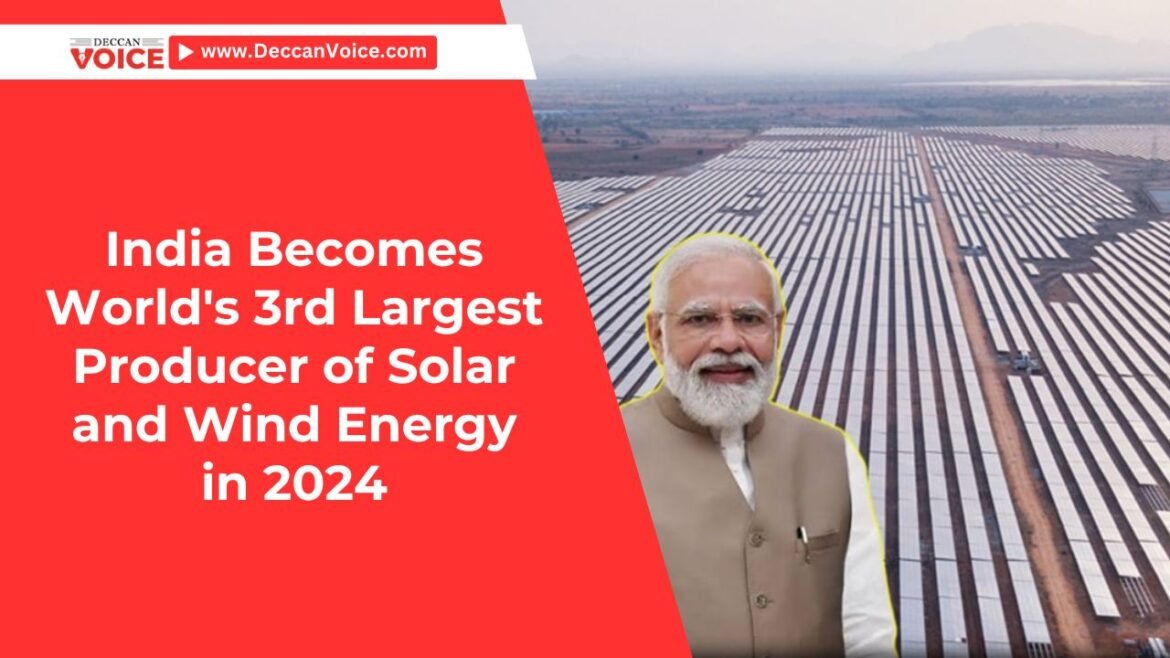Table of Contents
India has achieved a remarkable milestone in its journey towards clean energy. According to a latest report published by the global energy think-tank Ember, India has surpassed Germany to become the world’s third-largest producer of electricity from solar and wind energy in 2024. This development marks a significant step in India’s commitment to sustainable and renewable energy production.
India’s Rising Contribution to Global Clean Energy
As per the report, solar and wind energy together accounted for 15% of global electricity generation in 2024. India has contributed an impressive 10% of this share, placing it just behind China and the United States — the top two countries in renewable energy generation.
This achievement not only highlights India’s growing energy needs but also its focus on reducing carbon emissions and promoting green energy initiatives.
Rapid Growth of Renewable Energy in India
India’s renewable energy generation has almost doubled in the last five years leading up to 2024. The government’s strong push through various schemes like the National Solar Mission, wind energy programs, and investment-friendly policies has driven this exponential growth.
The government has also set ambitious targets for renewable energy, aiming to reach 500 GW of non-fossil fuel capacity by 2030.
Factors Behind India’s Success
Some of the key reasons for India’s rapid rise in solar and wind energy production include:
Heavy investments in solar parks and wind farms
Implementation of favorable government policies
Increase in public-private partnerships
Falling prices of solar panels and wind energy equipment
Active involvement of private companies and foreign investors
Importance of This Achievement
India’s achievement is not just a matter of pride but a crucial step towards tackling global climate change. With increasing energy demands and environmental concerns, India’s commitment to renewable energy helps set a global example for balancing development with sustainability.
Challenges Ahead
While this growth is promising, India still faces challenges in:
Expanding storage capacity for renewable energy
Upgrading transmission infrastructure
Addressing land acquisition and environmental concerns
Ensuring consistent policy support across states
Conclusion
India becoming the third-largest producer of solar and wind energy in 2024 is a testament to its dedication to building a sustainable future. Surpassing Germany — a country known for its green energy revolution — highlights India’s potential to lead the global renewable energy market.
With continued investments, strong policy support, and public awareness, India can further strengthen its position in the world’s clean energy transition.



